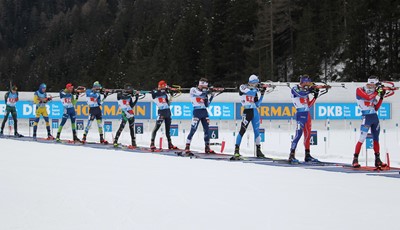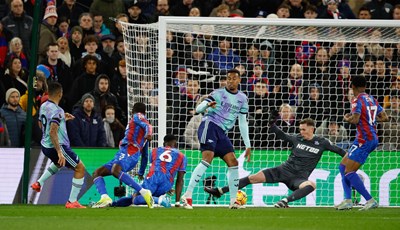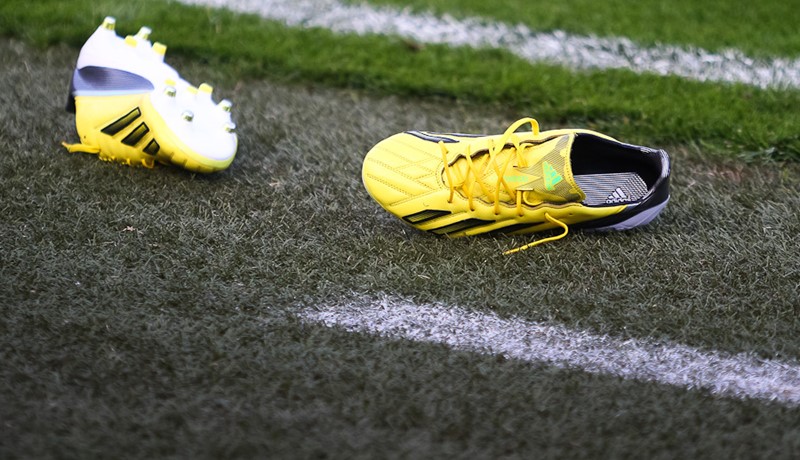Sudac se predomislio



malo prekasno
When UFC light heavyweight champion Lyoto Machida got his hand
raised on Oct. 24 after his title defense against Mauricio “Shogun”
Rua, in a fight where most polls showed about 80 percent of the public
believed the title should have changed hands, it set off a series of
three straight major-show UFC main events in which judging became a
hotly debated issue.
But some of the most vehement response has come from a surprising
source: the judges themselves, some of whom feel handcuffed and
frustrated with the system in place.
The most vocal is veteran official Nelson “Doc” Hamilton. Hamilton
was one of the three judges who controversially scored that fight 48-47
in favor of Machida. Yet after watching tape of the fight, Hamilton now
believes Rua was the winner.
“There was a round in that fight [Round 4] where my line of sight
while they were standing was blocked,” said Hamilton, who feels TV
monitors for judges would solve the problem. “Because of the angle
where most of the round was fought, I couldn’t see the punches and
whether they were landing. If the fight had been on the ground, I could
look at the big screens, but this was a fight where the blows were
coming one at a time and you don’t want to look away and miss an
important blow.”
When Hamilton saw the fight again, he noted that viewers saw Round 4
from a completely different perspective that he did. He also added that
the live commentary may have swayed viewers into thinking Rua won
decisively. So, based on what he couldn’t see from his cageside vantage
point, he believes Rua won the round.
Keith Kizer, the executive director of the Nevada Athletic
Commission, said usage of monitors at the judging stations is worth
looking into, but he also noted its flaws. He said he’s noticed that
when he has watched fights on monitors while at ringside, sometimes
he’s still looking at the monitor when the fight is front in front of
him.
“The reason we have judges in three different positions is to get
three different vantage points,” said Kizer. “If all three judges are
watching a monitor, they are all getting the same vantage point – the
television camera angle.”
‘Square peg in a round hole’
The lack of monitors, however, is a secondary point in Hamilton’s
attempt to revamp the scoring system and the primary criteria used for
fight judging. He considers the 10-point must system – used by
commissions for MMA because it was in place for boxing – as “trying to
put a square peg into a round hole.”
Machida-Rua and other fights, including the Nov. 14 Brandon
Vera-Randy Couture match and the Tito Ortiz vs. Forrest Griffin fight
seven days later, underscore points that Hamilton has been trying to
make about the current system. Most of the regulations in the sport
were put in place in 2000, when New Jersey’s Athletic Control Board
started regulating UFC events in Atlantic City. It created rules for
the sport and its judging, which, with some modifications, turned into
the current “unified rules” used throughout North America.
“But we’re a different sport,” said Hamilton, 61, a chiropractor by
trade and lifelong martial artist who not only regularly judges MMA
events under the current system, but who has also judged MMA in Japan
for Pride with a different system, as well as kickboxing with another
system. “We’re not wrestling, we’re not judo and we’re not boxing.”
The single most obvious problem with the current scoring system came
with Ortiz vs. Griffin. Judges are discouraged from handing out 10-10
scores in a round, and they usually only hand out 10-8 scores for an
incredibly one-sided round. So most of the time, anything from winning
a squeaker of a round to completely dominating a round yet coming short
of destroying the guy ends up on the scorecard at 10-9.
In the case of Ortiz-Griffin, the first two rounds were close and
could have been judged either way. The third round saw Ortiz run out of
gas. Griffin picked him apart at will, out-striking Ortiz 41-5 in a
round that didn’t go to the ground. Still, he never knocked Ortiz down
or had him on the verge of finishing, and thus didn’t get a 10-8 score.
Griffin’s dominant second round counted as much in the scoring as
the two previous rounds, which were coin-flip close. In judging the
fight overall, Griffin clearly won, and he did get the split-decision
win. But a very reasonable judge could have scored it 29-28 for Ortiz
based on the flaws inherent in the round-by-round scoring system, while
being fully cognizant that Griffin clearly won the fight.
Another inherent problem is that while judges are told they can give
10-10 scores, they also believe if they do so with any frequency, they
won’t be asked back.
“I’m not going to die on that sword,” said Hamilton.
There is also a reluctance to give 10-8 rounds unless a fighter is completely dominant in the round.
“Judges think that if they give a 10-8 in a three-round fight that
they’ve made it almost impossible for the other fighter to win a
decision,” said John McCarthy, MMA’s most well-known referee, who
frequently works as a judge and teaches seminars in judging the sport.
Half-point proposal
Hamilton proposes a scoring system based on breaking the scoring
down to half-points, where a close round, a solid win, a dominant win
and having the opponent on the verge of defeat could all be
differentiated.
Under this system, if a fighter wins a round that’s difficult to
call, it gets scored 10-9.5. When it’s clear that one fighter won the
round, it’s 10-9. When a fighter dominates the round but doesn’t have
his opponent in bad shape during the round, or if a fighter does major
damage but the opponent gets a degree of offense in, that would be a
10-8.5. A 10-8 round or lower would be similar to how things are scored
today.
“To a man, every judge I’ve spoken with favors this system,”
Hamilton said. “The problem is you will start getting arguments about a
10-9 vs. a 10-8.5. Do we then go to quarter-points, or go like
gymnastics with tenths of a point,” said Kizer, the executive director
of the Nevada Athletic Commission.
Without question, this system will lead to more debates about
scorecards from fans, but it could fine-tune final scores, to the point
that the judges’ scores aren’t at odds with the person they feel won
the fight.
Kizer said Hamilton’s proposals were talked about at the recent
American Boxing Commissioners convention, and he believes that of all
the different ideas for scoring he’s seen, Hamilton’s is the second
best “only to the system we have in place.”
“I think that MMA is a young sport and we should be open to
possibilities for improvement,” said Nick Lembo of the New Jersey
Athletic Control Board. “Doc Hamilton’s half-point system is something
that should be explored and debated. In a sport featuring three- and
five-round fights, a half-point system, used properly, may lead to more
acceptable and proper outcomes.”
Hamilton noted that in the Nov. 14 main event, where Couture beat
Vera on straight 29-28 scores based on squeaking out Rounds 1 and 3 but
solidly losing Round 2, his system would have likely judged Vera the
winner. He saw it as 10-9.5 for the first and third for Couture, and a
10-8.5 for Vera, adding up to 29-28.5 for Vera, who scored a knockdown
and inflicted the most damage in the fight in Round 2.
He wasn’t the only official who came to the conclusion that Vera won.
“Based on who did the most damage, Brandon Vera won the fight,” said McCarthy, who advocates the half-point system.
McCarthy noted that when he watched the fight, under the current
scoring system, he felt Couture won the first round close because Vera
did almost nothing on offense. He said Vera clearly won the second
round but while he got a takedown and was even momentarily in a mount
in Round 3, Vera did no damage and he was inactive much of the round,
and could reasonably have been judged to have lost it.
Damage done
The current criteria in place for judging fights are listed as
effective striking and grappling, effective aggression and cage control.
McCarthy believes damage should be the first criteria looked at, and the effort to finish the fight the second.
“At the end of the day it’s a fight, and the winner of the fight should be the guy who does the most damage,” McCarthy said.
Hamilton and McCarthy concur that a major problem with the current
judging is that not enough credit is given to effective grappling, and
in particular, near-submissions that do damage. Hamilton pointed to the
Oct. 10 fight between Donald Cerrone and Ben Henderson, where Cerrone
had Henderson in a choke and on the verge of finishing him in the first
round, yet he still lost the round because Henderson got more punches
in. Cerrone ended up losing a close decision in the five-round fight.
“When you have a choke or a triangle nearly sunk in, you are making
it hard for the opponent to breathe; you are doing damage,” said
McCarthy, who also pointed out in Machida-Rua that a clear sign of
damage was Machida switching his stance and changing his lead foot as
the fight wore on.
McCarthy said another issue, which he’s heard directly from judges,
is the mentality that comes from boxing where, in a championship fight,
a challenger should have to clearly beat the champion to win the title.
“That’s the most asinine thing in the world,” he said. “The minute
the fight starts, nobody is the champion. They are fighting for the
championship.”
Hamilton said making changes in bureaucracy is difficult and that,
left to their own devices, those in charge aren’t going to make the
changes.
“At this point, it is far from implementation,” said Lembo. “It
would need to be presented to the ABC, voted on and, if passed, adopted
by individual commissions in their respective jurisdictions.
“It’s my goal that these changes are implemented within my lifetime.”
Znači mislio je da je Machida pobjedio jer uopće nije vidio borbu, nešto mu je zakljanjalo pogled?!?!





Za nepovjerovat.. šta drugo reći, sudac koji uopće ne vidi borce

bravo za organizaciju, znači one komične karte o ćoravim sucima su ipak točne.
Druga sprdačina je to bodovanje po rundama (10-9) kao u boksu, u Prideu je to bilo 100x bolje jer se bodovala cijela borba ukupno, tamo se ovo ne bi desilo.
[uredio madmax17 - 27. prosinca 2009. u 10:49]
























 malo prekasno
malo prekasno







